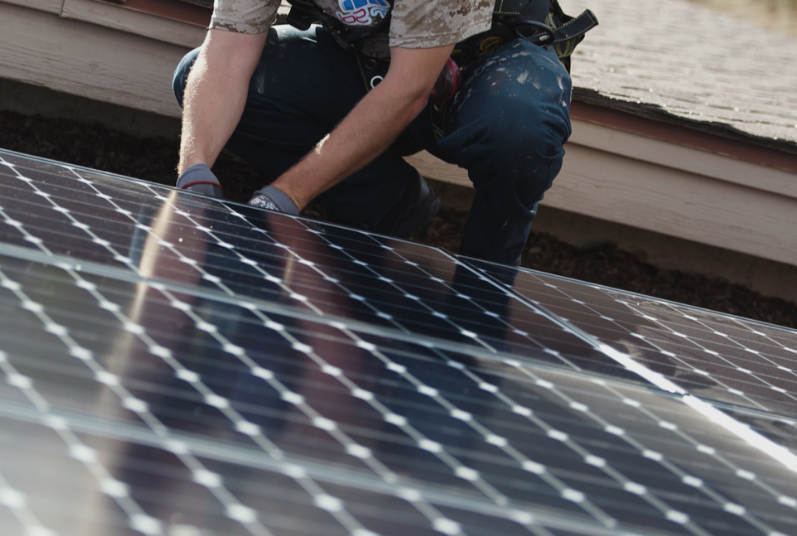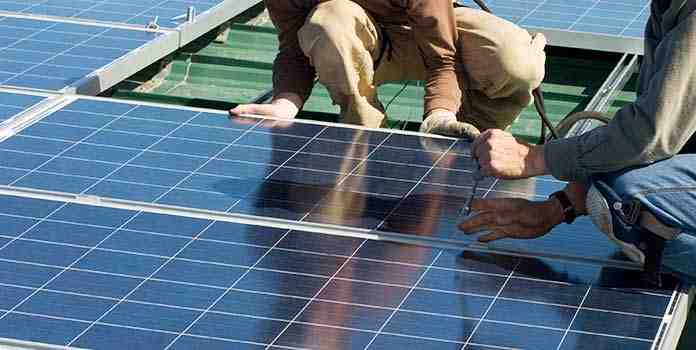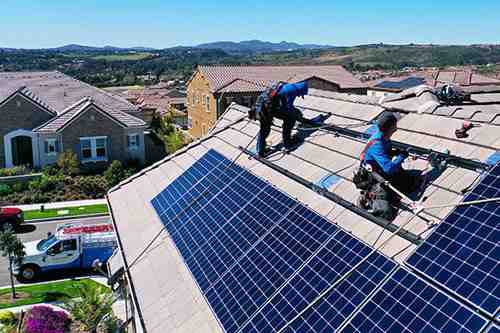Best Solar Companies in San Diego
Solar Energy San Diego of San Diego is one company that emphasizes warranty protection. This company has been in the solar industry for over 40 years and maintains a high standard of quality and professionalism. They also have a friendly staff and can help you with everything from home solar to custom solar systems. You can also contact them if you have questions about their products or services. These companies have a wide range of services and can install solar panels and batteries for commercial and residential properties.
If you’re in the market for solar panels and in San Diego, you’ll want to check out SunPower. They offer a number of purchase options, including leases and power purchase agreements. They can also install solar panels, batteries and electric vehicle charging stations. They also design and install commercial solar solutions and have world-class technology. Although they are a bit pricey, they have exceptional customer service and highly trained technicians. They can also help you take advantage of federal and California incentives to install solar energy systems.
Semper Solaris is a veteran owned business founded in 2012. They have an A+ rating with the Better Business Bureau and offer solar installations for 1% of the state average. They use SunPower panels, which were designed in the United States and contain ultra-pure silicon for maximum efficiency. Solar Energy San Diego also monitors your system performance and provides warranty coverage if required. They are also NABCEP Certified Installers and International Renewable Energy Council Certified Master Trainers.
Another quick way to find a list of solar energy companies in San Diego is to look in the phone book. You can also find solar company listings on websites, which often have customer reviews. Asking a few questions is a good idea when choosing a solar installation company. A reputable one should be able to provide you with information on insurance and warranty coverage. You should also ask for references. They should be able to answer any of your questions and provide you with a detailed quote.
Stellar Solar brand is a well known solar installer in San Diego. They have been in business since 1998 and have installed over 5,300 solar systems ranging from residential to commercial to municipal scale systems. The company also has great customer service and a team of professionals with experience in solar installations. Choosing the best solar installation company for your needs is important, as you must be satisfied with your system. If you are looking for a turnkey solar system provider in San Diego, you may want to check out Sullivan Solar Power. They have a number of excellent features.
A good solar installation will cost about $17,000, but the cost can come down if you qualify for the California Solar Initiative rebate and other tax credits. The price of the panels will depend on your location, but you’ll still end up saving a significant amount of money in the long run. The most affordable panels should be installed in the south of the city. There are three main brands of solar energy in San Diego: polycrystalline, monocrystalline, and optimal.
Sunrun is San Diego’s oldest and largest solar energy company. They only sell SolarEdge solar panels but carry batteries from other brands. And they offer a 10-year warranty on their panels, which is a great deal considering the price. It also has more technologies than its competitors, making it the best option for flexible terms. You can also call them and request a quote. If you decide to go with Solar Energy San Diego, you will save time and money.
In San Diego, you can find some solar installation companies that offer a wide range of services. Many of these companies have high ratings on Angie’s List and have hundreds of satisfied customers. They will also install solar panels for commercial and residential properties in San Diego. The most important factor is that they will fit the size of your roof and you will have the highest quality system installed. You will be satisfied with the end result if you select the right company.
Is solar mandatory in California?

In 2018, California mandated that new single-family homes, as well as multi-family homes up to three stories high, must include solar panels beginning in 2020. A second mandate requiring new commercial buildings to have solar panels was also voted into law. . and battery storage too.
When was California’s solar mandate passed? “California is forced to lead even further than ever.” The latest big change in the energy provisions of the state building code: the requirement that new single-family homes be equipped with solar power. ” was approved in 2018. The rules became effective on January 1, 2020.
Do all new houses have to have solar panels?
Today, when building a new home, you are required to include energy saving measures and trade-offs like cheap new build solar panels. These include solar panels or solar thermal systems. Solar panels don’t have to detract from the attractiveness of your new build.
What is the new law in California regarding solar panels that will take place in 2020?
California’s 2020 Solar Mandate requires all newly built homes to install solar photovoltaic (PV) systems. These requirements are based on the size of the home and the climate zone. There may be exceptions to the mandate, such as a property being too shaded or having a roof too small to install solar panels.
What states require solar panels?
The ten states are Nevada, Colorado, New Mexico, Texas, Minnesota, Michigan, North Carolina, Maryland, Pennsylvania, and Massachusetts. The group aims to have legislation introduced by mid-2022 in every state, to require solar power in new homes.
Do all new homes built in California have to have solar?
California’s home solar mandate is now in effect. All newly built single-family homes (and most low-rise apartment buildings) are required to have solar panels on their roofs. … It’s cost-effective enough that the California Energy Commission could make it standard as part of new construction.
Does California have to go solar?
Today, more than 1.3 million homes in California are solar powered. Advocates say many more homeowners are needed to help California comply with a 2018 state law that says the grid must be 100% carbon-free by 2045. The California Energy Commission now requires solar panels on new homes .
Do all houses in California have to have solar?
California’s home solar mandate is now in effect. All newly built single-family homes (and most low-rise apartment buildings) are required to have solar panels on their roofs.
Who are First Solar competitors?

Main competitors of First Solar
- Suntech. 4,000. $1 billion.
- Sun Frontier K.K. 1,100. $111 million.
- Canadian sun. 13,000. $3 billion. …
- Waaree energies. 2,500. $273 million.
- Q CELLS US. 1,500. $407 million.
- Yingli Solar. 18,000. $648 million.
- RISEN ENERGY CO. 10,000. $1 billion.
- Sun Trinity. 15,000. $3 billion.
Is First Solar owned by Tesla? Here’s a look at how two of the big players in the solar energy industry, Solar City, owned by Tesla, Inc. (TSLA) and First Solar, Inc. (FSLR), play off each other in this intensely competitive field. .
Who is the leading solar company?
| Rank | Company | Campus |
|---|---|---|
| 1 | LONGi Solar | China |
| two | solar tongwei | China |
| 3 | sun JA | China |
| 4 | solar aiko | China |
What company is leading in solar energy?
1. Best Solar Company Overall: SunPower. California-based SunPower has been a leading US solar company since 1985, designing photovoltaic technology for NASA, recyclable solar cells, its own inverters and its own battery storage systems.
Where is the headquarters of First Solar?
Is First Solar a good company?
First Solar is a great company to work for in an industry that is very competitive and innovative in research and development. Competitive salary and benefits are a plus. Employee stock options along with 401k matching.
Is First Solar Chinese?
First Solar remains very much an outlier in the domestic industry, as a manufacturer that produces panels in the US, with components largely sourced from the US. Because it doesn’t use polycrystalline silicon, a critical raw material used in solar panels, it sources less than 1% of its supplies from China.
What is the solar tax credit for 2022?

In December 2020, Congress approved an extension of the ITC, providing a 26% tax credit for systems installed in 2020-2022 and 22% for systems installed in 2023. (Systems installed before December 31, 2019 were eligible for a 30% tax credit). The tax credit expires as of 2024, unless Congress renews it.
What is the solar tax credit for 2022? The 26% solar tax credit is still available through 2022 With the original phase-out schedule, the solar tax credit was reduced to 22% in 2021, then 10% for businesses in 2022 only (0% for homeowners ). This benefit is officially called Investment Tax Credit (ITC) and has been available since 2006.
How do I get federal tax credit for solar?
Filing Requirements for the Solar Tax Credit To claim the credit, you must file IRS Form 5695 as part of your tax return. You’ll figure the credit in Part I of the form and then enter the result on your 1040.
When can I claim my solar tax credit?
In general, you can claim a tax credit on expenses related to the new solar photovoltaic system that already came installed on the home for the year you moved into the home (assuming the builder did not claim the tax credit), in other words, you can claim the credit in 2021.
How does federal tax credit for solar work?
The Investment Tax Credit (ITC), also known as the Federal Solar Tax Credit, allows you to deduct 26 percent of the cost of installing a solar energy system from your federal taxes. The ITC applies to both residential and commercial systems, and there is no limit on its value.
How does the solar tax credit work?
When you install a solar system in 2021 or 2022, 26% of your total project costs (including equipment, permits, and installation) can be claimed as a credit on your federal tax return. If you spend $10,000 on your system, you owe $2,600 less in taxes the following year.
Is the solar tax credit a refundable credit?
Solar ITC is not a refundable credit; it can only be used against your organization’s US federal income tax liability.
How does the 30 federal tax credit for solar work?
The federal residential solar energy credit is a tax credit that can be claimed on federal income taxes for a percentage of the cost of a solar photovoltaic (PV) system. … (Systems installed prior to December 31, 2019 were eligible for a 30% tax credit.) The tax credit expires as of 2024 unless Congress renews it.
Is it worth to install solar panels in California?

Yes, solar power in California is totally worth it. Yes, look how many houses in California have solar panels! But judge for yourself. Solar power offers a low carbon footprint, clean, reliable power that can support your electricity even when the grid fails, and savings for any budget.
Is it worth going solar in California? Yes, solar power in California is totally worth it Solar power offers a low carbon footprint, clean, reliable power that can support your electricity even when the grid fails, and savings for any budget. Whether you are a homeowner or a renter, solar energy is more than a distant dream.
How long does it take for solar panels to pay for themselves in California?
Myth #4: Solar panels don’t pay for themselves. The efficiency of solar panels continues to increase and the cost of materials, as well as installation costs, are steadily decreasing each year. Solar panels will be amortized between 8 and 16 years, depending on the province in which you are located.
Do solar panels pay themselves back?
Solar panels pay for themselves over time by saving you money on electric bills and, in some cases, earning you money through ongoing incentive payments. Solar panel payback time averages between 5 and 15 years in the United States, depending on where you live.
Do solar panels pay for themselves UK?
Also, once the initial investment is covered, the electricity generated by the panels is free, the solar panels eventually pay for themselves in a couple of years. When you consider the fact that there are solar panel grants available to UK homeowners, solar panels are an attractive investment.
What is the average cost to install solar panels in California?
The average cost of installing a solar panel in California ranges from $11,942 to $16,158. Based on cost per watt ($/W), installing a solar panel in California ranges in price from $2.39 to $3.23.
Why solar panels are not worth it?
Space restrictions mean you can’t install a large enough solar panel system to generate adequate savings on your electricity bill. Roof problems, such as shading or non-ideal direction or angle, negatively affect the solar potential of your home. Low energy costs: You don’t spend much on electricity to begin with.
How much does it cost to put solar panels on a 2000 square foot home?
The average cost range to install solar panels on a 2,000 square foot home is between $15,000 and $40,000.



